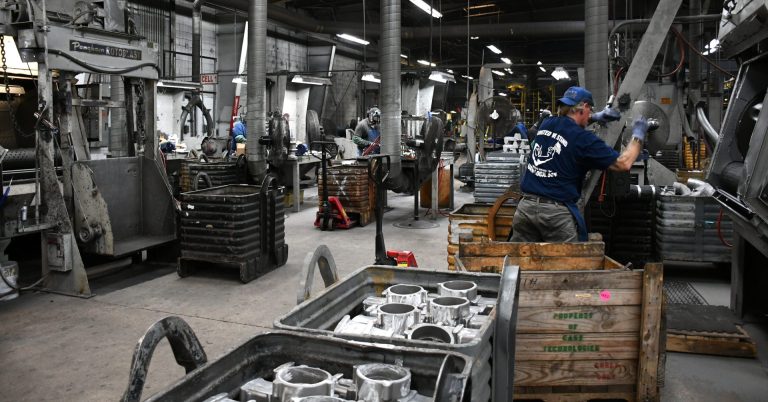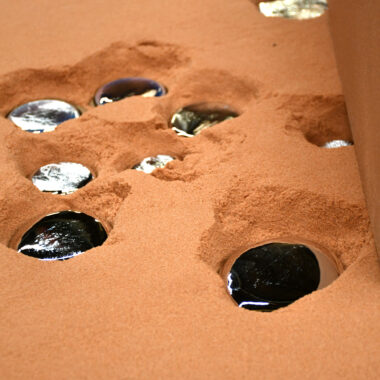Crafting Brilliance: Navigating the Globe About Aluminum Casting
Wiki Article
From Layout to End Up: The Full Aluminum Casting Refine Demystified
In the realm of production, the procedure of aluminum spreading stands as a pivotal technique that has actually fueled industries for decades. Each step in this complex procedure, from the first style phase to the final complements, plays a critical role fit the end result of the product. What truly lies below the surface of this process stays a secret to several. By unraveling the complexities and clarifying the nuances involved in each stage, a deeper understanding of the art and science behind aluminum casting emerges. about aluminum casting. Stay tuned as we dissect the complete light weight aluminum spreading procedure, discovering the intricacies that transform resources right into polished items.Creating the Casting Mold
When initiating the aluminum spreading process, precise focus to creating the casting mold and mildew is vital for making certain the end product's stability and quality. The spreading mold offers as the foundation for the whole casting procedure, determining the shape, dimensions, and surface area finish of the ultimate aluminum component.To design an efficient casting mold and mildew, engineers must consider various aspects such as the complexity of the component, the sort of light weight aluminum alloy being utilized, and the desired residential or commercial properties of the last product. about aluminum casting. Computer-aided layout (CAD) software program is often used to create in-depth schematics of the mold and mildew, permitting specific personalization and optimization
Furthermore, the style of the spreading mold directly impacts the performance and cost-effectiveness of the casting process. A properly designed mold and mildew minimizes product waste, reduces the requirement for considerable post-casting machining, and enhances general production speed.
Melting and Pouring Light Weight Aluminum
With the layout of the casting mold wrapped up, the following critical action in the aluminum casting process is the melting and putting of the light weight aluminum alloy. The process starts with packing the light weight aluminum alloy right into a furnace where it is heated to its melting point, commonly around 660 ° C(1220 ° F) for aluminum. Crucible heating systems, induction heating systems, or gas-fired reverberatory heaters are commonly utilized for melting light weight aluminum. As soon as the light weight aluminum is liquified, it is essential to preserve the temperature within a details array to ensure the quality of the castings.The liquified light weight aluminum is thoroughly moved from the heating system to the casting mold. Appropriate putting methods contribute dramatically to the general quality of the last aluminum spreading.
Strengthening and Cooling Refine
Upon completion of the putting process, the liquified aluminum transitions into the cooling and strengthening phase, an essential phase in the aluminum spreading procedure that directly influences the end product's stability and characteristics. As the aluminum starts to cool, its particles arrange themselves right into a strong type, progressively taking on the form of the mold. The rate at which the aluminum cools down is vital, as it affects the material's microstructure and mechanical residential or commercial properties. Quick cooling can lead to a finer grain framework, boosting the product's strength, while slower air conditioning may bring about larger grain sizes, influencing the last product's ductility.During this stage, it is necessary to control the cooling procedure carefully to prevent defects such as porosity, shrinkage, or internal stresses. Numerous air conditioning methods, such as air cooling, water quenching, or controlled cooling chambers, can be utilized based on the specific needs of the casting (about aluminum casting). By controling the solidification and keeping track of and cooling procedure, makers can make certain the manufacturing of top notch aluminum castings with the wanted mechanical and metallurgical residential properties

Getting Rid Of the Final Casting
As soon as the aluminum casting has adequately strengthened and cooled in the mold and mildew, the following action in the process involves thoroughly removing the final casting. This step is vital to ensure that the aluminum component is successfully extracted without any type of damages or flaws.To get rid of the casting, the mold is opened, and the casting is drawn out utilizing different techniques relying on the intricacy of the component and the mold and mildew layout. For simpler shapes, the casting can typically be quickly eliminated by hand or with straightforward tools. Nevertheless, for more detailed styles, additional tools such as ejector pins, air blasts, or hydraulic systems might be needed to facilitate the elimination process without causing any harm to the casting.
After the spreading is effectively eliminated from the mold, any excess product such as entrances, joggers, or risers that were used throughout the spreading process are cut off. This action assists in achieving the final wanted form of the aluminum component before it undergoes any kind of additional ending up procedures.
Finishing and High Quality Examination
The last phase in the light weight aluminum casting process involves meticulous ending up methods and strenuous top quality assessment procedures to visit their website ensure the honesty and precision of the actors aluminum components. Completing techniques such as grinding, fining sand, and shot blasting are used to get rid of any excess product, smooth rough surface areas, and improve the visual charm of the last product. These processes not only enhance the appearance however also make sure that the parts fulfill the specified dimensional tolerances and surface coating needs.
Verdict
In verdict, the aluminum spreading procedure involves making the mold and mildew, melting and pouring light weight aluminum, solidifying and find out here now cooling the spreading, getting rid of the end product, and completing with a quality evaluation. Each action is vital in guaranteeing the last product satisfies the desired requirements. By comprehending the whole process, suppliers can create high-quality light weight aluminum castings effectively and effectively.Keep tuned as we dissect the full aluminum spreading procedure, uncovering the details that transform raw materials right into refined items.
With the layout of the casting mold wrapped up, the next essential step in the aluminum spreading procedure is the melting and pouring of the aluminum alloy.Upon completion of the putting process, the molten light weight aluminum changes right into the solidifying and cooling down phase, a vital phase in the light weight aluminum casting process that straight influences the last item's integrity and qualities.The final stage in the aluminum casting procedure entails meticulous completing methods and strenuous top quality inspection methods to ensure the integrity and precision of the cast aluminum parts.In final thought, the light weight aluminum spreading procedure entails making the mold and mildew, melting and putting aluminum, strengthening and cooling down the spreading, removing the last item, and finishing with a high quality examination.
Report this wiki page